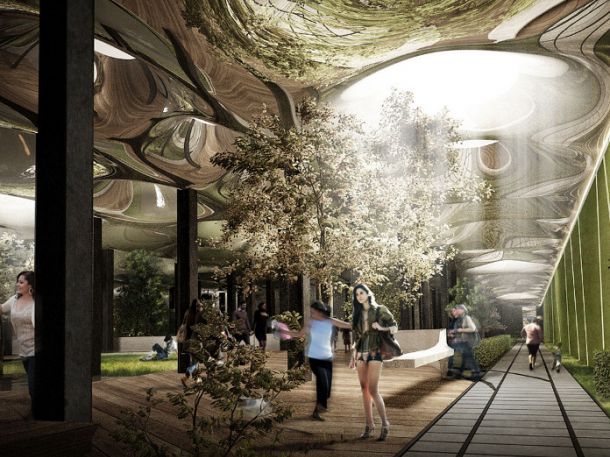
There’s no denying that the High Line has had a huge economic impact on the areas of Chelsea it runs through. That isn’t always a good thing, argue some, but the fallout from increasing property value and migrating consumers does nothing to change the facts: 12,000 jobs created – 8,000 of which were in construction – $2 billion in private investment in areas surrounding the park, and apartment costs doubling per square foot all mark the project as a success. The investment from the city, from New York State, from the Federal Government, and from the main source – around $150 million dollars in private fundraising through Friends of the High Line – has, in a purely fiscal sense, been worth it.
The Lowline
The High Line’s Fight for Viability
When the High Line project was first suggested a decade ago, its future was not bright. The administration of Mayor Giuliani was against it, with the viaduct slated for demolition. Property owners were in favor of the razing of what was, back then, a derelict and unused space. Local business were fearful that the creation of the park would damage trade and hurt communities, and many doubted the economic benefits of a raised park that would be, in places, no wider than some of the city’s sidewalks. However those fighting for The High Line’s creation didn’t give up, and in 2003 an open competition was held inviting entries to design the future High Line, with a simple challenge: To create compelling visions for a new urban public space, with captivating designs that demonstrate how the line can be transformed in bold, optimistic ways to benefit New York City for generations.The competition – billed as one for “ideas” instead of concrete plans – sought to build upon the initial Friends of the High Line momentum and present answers to legal, social, and design issues that came from such a renovation project. 720 entrants from 36 countries presented visions and possibilities, and the winners have helped guide the ongoing development process.Now, the original doubts about the park have been blown from the water and Mayor Bloomberg has become a vocal supporter of the park, promoting investment and defending the rezoning and development of the surrounding area. As Bloomberg said, “The High Line plunges visitors into the very heart of a dense urban environment […] it also reclaims an artifact of the City’s recent industrial past, and reinvents it for the 21st century.” Now, businesses are keener to be near to the park than ever before.
Good News for The Lowline?
Barasch and Ramsey have turned attention to the benefits they say the Lowline could bring to the Seward Park Urban Renewal Area (SPURA) planned for the above ground areas near the proposed site. A draft economic impact survey suggests increased land values for SPURA sites of between $10 million and $20 million – with somewhere between $5 million and $10 million in hotel and real-estate taxes, along with sales, over 30 years based on a net-present-value basis. Strong arguments indeed, if they can supply the grass roots and community support required for such an ambitious project.The High Line is, by its nature set to expand despite the high cost of maintaining the site – currently estimated to be $3.5 – $4.5 million per year. Phase 2 construction is complete and due to open spring 2013, at a cost of $66.8 million, and as the popularity of the park grows and it brings tourism, investment – perhaps gentrification – and new business interests, it seems surprising that there was ever doubt the project would succeed at all. $38.4 million of phase 2 funds came from the city. The rest, and all maintenance costs, are provided through private donation.In contrast, The Lowline’s physical expansion is, for obvious reasons, finite; however, its potential as a cultural and educational hub may be larger, as well as its credentials as a tourist attraction and, to quote Ramsey, as “an acid dream of science fiction and archaeology,” show genuinely exciting potential. In the end, though, it is in the power of current investors to decide if the future benefits will be worth the cost, and whether NYC will get its underground park.For more information about The Lowline and supporting the project, please see The Lowline website.

